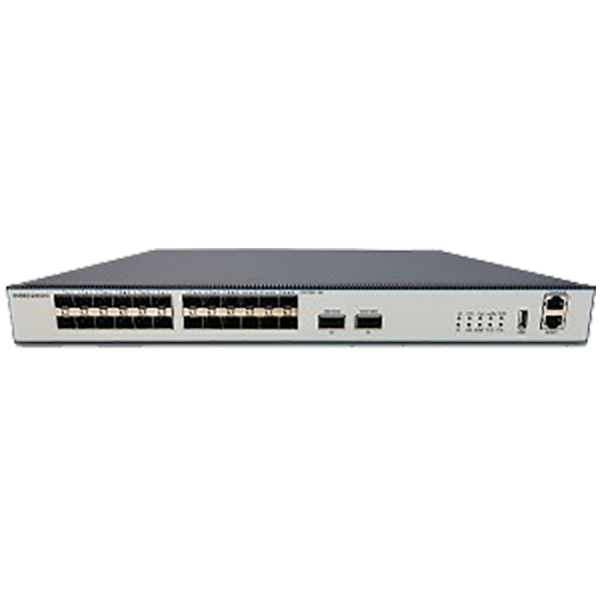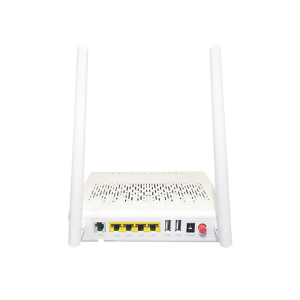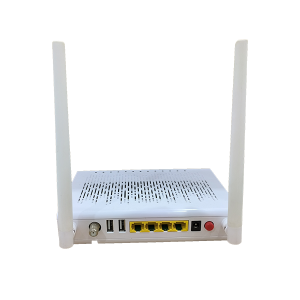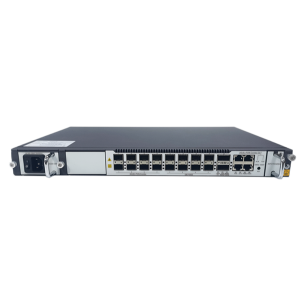Products
Introducing the Next Generation Network: Layer 3 Switches
Introducing the Next Generation Network: Layer 3 Switches,
,
Main features
S5354XC is a Layer-3 uplink switch configured with 24 x 10GE + 2 x 40GE /2 x 100GE. The software supports the ACL security filtering mechanism, security control based on MAC, IP, L4, and port levels, multi-port mirroring analysis, and image analysis based on service processes. The software is easy to manage and flexible to install, and can meet various complex scenarios.
FAQ
Q1: Can I put our logo and model on your products?
A: Sure, we support OEM and ODM based on MOQ.
Q2: What is your MOQ of ONT and OLT?
For batch order, ONT is 2000 units, OLT is 50 units. Special cases, we can discuss.
Q3: Can your ONTs/OLTs be compatible with third-party products?
A: Yes, our ONTs/OLTs are compatible with third party products under standard protocol.
Q4: How long is your warranty period?
A: 1 year.
What is SWITCH?
Switch means “switch” is a network device used for electrical (optical) signal forwarding. It can provide an exclusive electrical signal path for any two network nodes that access the switch. The most common switches are Ethernet switches. Other common ones are telephone voice switches, fiber switches, etc.In today’s fast-paced, hyper-connected world, businesses and organizations rely heavily on their networks to move data seamlessly and efficiently. As the demand for advanced networking solutions continues to grow, a new product has revolutionized the way data is transmitted – Layer 3 switches.
Essentially, a Layer 3 switch combines the functionality of a traditional switch with the advanced features and capabilities commonly found in routers. This powerful combination enhances performance, improves security, and increases flexibility in managing network traffic.
One of the key advantages of Layer 3 switches is their ability to route data at high speeds, making them ideal for organizations that handle large amounts of network traffic. With built-in forwarding capabilities, it efficiently directs packets to their intended destination, minimizing latency and optimizing network performance. This makes it an excellent choice for data-intensive tasks such as video streaming, cloud computing, and Voice over IP (VoIP) applications.
In addition, Layer 3 switches employ advanced security features to protect sensitive data and defend against malicious attacks. With built-in firewall capabilities, they monitor and control network traffic to ensure only authorized users can access critical resources. This prevents unauthorized access and protects the integrity of the network infrastructure.
Another notable feature of Layer 3 switches is their ability to create virtual local area networks (VLANs), enabling greater network segmentation and improved traffic management. By dividing a single physical network into multiple logical networks, VLANs enable organizations to isolate specific departments or groups of users, ensuring efficient bandwidth allocation and optimizing overall network performance.
In addition, Layer 3 switches provide comprehensive management functions, enabling network administrators to effectively monitor and control network traffic. With intuitive and user-friendly interface options, administrators can easily configure and manage various network settings, monitor performance metrics, and troubleshoot any network issues that may arise. This simplifies the entire network management process, saving valuable time and resources.
In conclusion, Layer 3 switches represent a major advancement in networking technology. Its ability to combine the functions of a switch and a router, plus high-speed routing capabilities, advanced security features, and comprehensive management options, differentiates it from traditional networking solutions. Whether you are a small business, a mid-sized business, or a large organization, Layer 3 switches are the ideal networking solution to meet your changing needs. Experience the power and efficiency of a Layer 3 switch and unlock the true potential of your network.
|
Product Specifications |
|
|
Energy saving |
Green Ethernet line sleep capability |
|
MAC Switch |
Statically configure MAC address Dynamically learning MAC address Configure aging time of MAC address Limit the number of learned MAC address MAC address filtering IEEE 802.1AE MacSec Security control |
|
Multicast |
IGMP v1/v2/v3 IGMP Snooping IGMP Fast Leave MVR, Multicast filter Multicast policies and multicast number limits Multicast traffic replicate across VLANs |
|
VLAN |
4K VLAN GVRP QinQ, Selective QinQ Private VLAN |
|
Network Redundancy |
VRRP ERPS automatic ethernet link protection MSTP FlexLink MonitorLink 802.1D(STP)、802.1W(RSTP)、802.1S(MSTP) BPDU protection, root protection, loop protection |
|
DHCP |
DHCP Server DHCP Relay DHCP Client DHCP Snooping |
|
ACL |
Layer 2, Layer 3, and Layer 4 ACLs IPv4、IPv6 ACL VLAN ACL |
|
Router |
IPV4/IPV6 dual stack protocol IPv6 neighbor discovery, Path MTU discovery Static routing, RIP/RIPng OSFPv2/v3、PIM dynamic routing BGP, BFD for OSPF MLD V1/V2, MLD snooping |
|
QoS |
Traffic classification based on fields in L2/L3/L4 protocol header CAR traffic limit Remark 802.1P/DSCP priority SP/WRR/SP+WRR queue scheduling Tail-drop and WRED congestion avoidance mechanisms Traffic monitoring and traffic shaping |
|
Security Feature |
ACL recognition and filtering security mechanism based on L2/L3/L4 Defends against DDoS attacks, TCP SYN Flood attacks, and UDP Flood attacks Suppress multicast, broadcast, and unknown unicast packets Port isolation Port security, IP+MAC+port binding DHCP sooping、DHCP option82 IEEE 802.1x certification Tacacs+/Radius remote user authentication, Local user authentication Ethernet OAM 802.3AG (CFM), 802.3AH (EFM) various Ethernet link detection |
|
Reliability |
Link aggregation in static /LACP mode UDLD one-way link detection ERPS LLDP Ethernet OAM 1+1 power backup |
|
OAM |
Console、Telnet、SSH2.0 WEB Management SNMP v1/v2/v3 |
|
Physical Interface |
|
|
UNI Port |
24*10GE, SFP+ |
|
NNI Port |
2*40/100GE, QSFP28 |
|
CLI Management port |
RS232, RJ45 |
|
Work Environment |
|
| operate temp |
-15~55℃ |
| Storage temp |
-40~70℃ |
|
Relative Humidity |
10%~90%(No condensation) |
|
Power Consumption |
|
|
Power Supply |
1+1 dual power supply, AC/DC power optional |
|
Input Power Supply |
AC: 90~264V, 47~67Hz; DC : -36V~-72V |
|
Power Consumption |
Full load ≤ 125W, idle ≤ 25W |
|
Structure Size |
|
|
Case shell |
Metal shell, air cooling and heat dissipation |
|
Case dimension |
19 inch 1U, 440*320*44 (mm) |
Products categories
-

Phone
-

Email
-

Whatsapp
-

Skype
-

Top




1-300x300.png)




